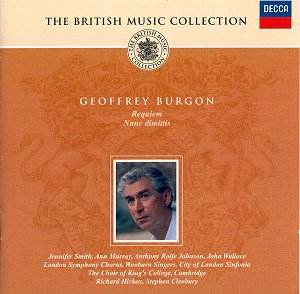 Composer: Francis Jackson
Composer: Francis Jackson
Works: Edinburgh Fanfare (1957), Five Preludes on English Hymn Tunes Op.60 (1987), Impromptu Op.5 (1944), Three Pieces Op.17 (1955), Division on Nun Danket Op.19 No.2 (1956), Prelude on Lonesome Valley Op.43 No.2 (1973), Recessional Op.32 (1963), Sonata Giocosa Op.42 (1972)
Performers: Francis Jackson at the organ of Hull City Hall and of York Minster
Recording: Hull City Hall, January 1986 and York Minster, 1973 (Sonata Giocosa)
Label: AMPHION PHI CD 180
Francis Jackson, a prominent figure in British organ music, has dedicated his life to the exploration of the organ’s vast capabilities. His oeuvre, spanning over seven decades, reflects an evolution of style deeply rooted in both traditional hymnody and innovative structures. This recent compilation of his works provides a comprehensive survey of his contributions, showcasing pieces that range from the early Impromptu Op.5, written as a tribute to his mentor Sir Edward Bairstow, to the more elaborate Five Preludes on English Hymn Tunes Op.60, composed in the late 20th century. Each work resonates with personal significance, revealing Jackson’s deep connections to family and faith.
The performances captured in this collection reflect Jackson’s own interpretive choices, illuminating the character of each piece with an intimate understanding of the organ’s voice. The recording quality, particularly for the pieces from 1986, stands out for its clarity, allowing the intricate counterpoint of the Three Pieces Op.17 to emerge with vibrant detail. The stately Processional, with its deliberate pacing, is offset by the ethereal Arabesque, which showcases Jackson’s delicate touch. The Pageant that follows bursts forth with a jubilant energy that is both exhilarating and masterfully controlled.
In the Edinburgh Fanfare, originally composed for brass and organ, the transition from the bold opening statement to the reflective passages demonstrates Jackson’s adeptness at manipulating timbre and dynamics. The Division on “Nun Danket,” a work that highlights the hymn’s melodic simplicity, is executed with a meticulous attention to phrasing and ornamentation, offering a fresh perspective on a familiar tune. The Recessional Op.32 is particularly noteworthy for its spirited Toccata-like passages, which culminate in a celebratory flourish, encapsulating Jackson’s affinity for exuberance.
Sound engineering merits commendation as well, with the recordings preserving the resonance of both Hull City Hall and York Minster. The natural acoustics enhance the organ’s tonal richness, particularly in the Sonata Giocosa. The opening Cadenza-Andante captures a palpable sense of tension and uncertainty reflective of the historical context surrounding York Minster’s restoration, while the subsequent Scherzo conveys a frenetic energy that mirrors the bustling restoration efforts. The work culminates triumphantly with a Galliard that deftly incorporates the hymn tune associated with the Minster, a clever nod to its architectural and musical heritage.
Francis Jackson’s music is a testament to the enduring power of the organ as an instrument of both personal and communal expression. The well-curated selections in this recording not only affirm Jackson’s distinguished status as a composer but also invite listeners to appreciate the nuanced beauty and intricate craftsmanship of his works. This collection serves as a vital resource for both scholars and enthusiasts, reaffirming Jackson’s legacy while urging a reevaluation of the rich landscape of British organ music in the 20th century. The performances, interpretations, and recording quality coalesce into a compelling portrait of a composer whose work deserves wider recognition and appreciation.
![Bach’s Sacred Works: A Captivating Exploration by [ Performer Name ]](https://classicalguy.com/wp-content/uploads/2024/11/cover-339.jpg)


